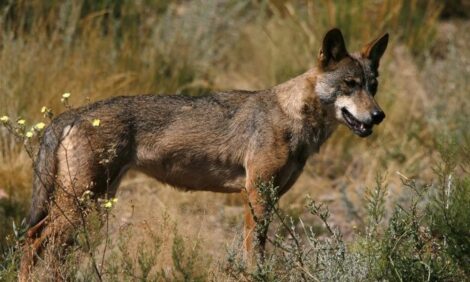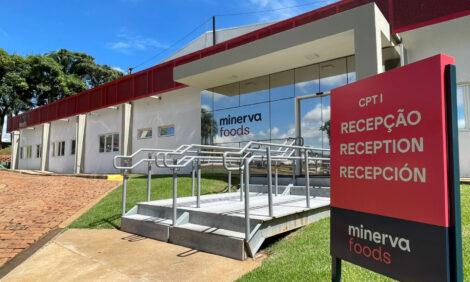



Norwegian cell-based agriculture research project receives major funding
The project uses both lab-cultivated meat and precision fermentationGlobal private investors are investing large sums of money in so-called cell-based agriculture. It is a new way of producing traditional agricultural products such as meat, milk, and eggs using modern biotechnology. Nofima is also focusing on cell-based agriculture in Norway, and a new major research project recently received funding, according to a company press release.
In Norway, research on lab-cultivated meat began in earnest in 2018. The research project GrowPro was led by Nofima senior scientist Sissel Beate Rønning and funded by the Research Council of Norway. This project was the first openly accessible research project in this area.
The goal was to develop new technology to cultivate muscle cells from bovine and to utilise residual biomass from the food industry as a growth medium for the cells. Sissel and her colleagues have now cultivated small pieces of meat, and the knowledge about residual biomass as food for the muscle cells has developed significantly.
Nofima scientists continue their work on cell-based agriculture in the strategic research program Precision. In addition, Nofima received support for a new research project this summer called ARRIVAL. The results of this project will also be openly accessible.
“In simple terms, there are two types of cell-based agriculture: lab-cultivated meat and precision fermentation. In the ARRIVAL project, we will use both methods to produce milk, eggs, and meat proteins. We will continue our research on how to scale up cell-based meat production and find out more about which materials are suitable to use as a framework for the muscle cells. We have already conducted some ‘framework trials’ and have achieved promising results using eggshell membranes”, says Sissel Beate Rønning. She has extensive experience in cell-based meat production and will also be the leader of this project.
With the help of yeast or other microorganisms, the scientists will use precision fermentation to make edible proteins such as egg white and milk proteins. Precision fermentation has been used in pharmaceuticals for years, but the volumes become much more extensive when food is involved. Therefore, the raw materials must be affordable, they must be able to compete with other traditional sources of protein (e.g., soy) when it comes to price, and they must be sustainable. Scientists want to test residual biomass such as bean starch, oat starch, and egg white as input factors to find new protein sources.
“Cell-based agriculture is a revolution in food production that can change agricultural production and ownership, land use, policy design, eating habits, and ethical issues. In the ARRIVAL project, we will take the research on cell-based agriculture several steps further. We want to implement new protein sources into existing food products and prepare society, consumers, and the food industry for the possible consequences of this radical shift in the way food is made”, explains Sissel.
“The interesting thing about cell cultivation, which is what the cultivation of meat is, are the input factors, i.e., the food the cells need to grow. Muscle cells are picky, and it is usual to use a growth medium made from parts of calf blood in current production. This production is not very sustainable, and many people are therefore critical of this type of protein cultivation. To successfully scale these types of technologies, new, sustainable growth media must therefore be developed”, says Sissel.
An essential part of the research that started in 2018 has been finding a growth medium in which the cells thrive and which is also sustainable. The Nofima scientists have developed new techniques and found that residual biomass from chicken, slaughter blood, eggshell membranes, and egg white may be suitable.
Skepticism regarding a growth medium made from parts of calf blood is just one of several arguments against eating lab-grown food. Among consumers, there is a general, emotion-based skepticism probably related to the fact that it feels unnatural, such as messing about with creation, playing god, and not respecting nature for what it is, as well as not knowing the range of possible future consequences. A kind of Frankenstein meat. On the other hand, quite a lot of consumers are positive. They often highlight animal welfare and sustainable food production as essential arguments.
Several international studies have been conducted on consumer attitudes and how to increase acceptance of lab-grown food. The conclusions indicate that it is crucial to provide consumers with knowledge about how production takes place and how the new technologies make it possible to produce healthier meat. Scientists involved in the ARRIVAL project will focus on Norwegian consumers regarding what they think and what qualities they want the ‘new meat’ to have.
Sissel sees the benefits of cell-based agriculture: “This type of food production can take place anywhere, pressure on arable land decreases, surplus material such as residual biomass and excess heat from other industries can be utilized, and Norwegian industry can be developed in yet another new direction. We can increase self-sufficiency in food in Norway, and we do not have to kill animals to produce the necessary protein in the form of meat.” However, she says it is vital to be at the forefront of this new technology. “In Norway, we have both the expertise and the money needed to develop new technical solutions for food production,” says Sissel Rønning.
There are several ethical dilemmas related to lab-cultivated food. In the new ARRIVAL project, Nofima will work with other leading Norwegian research communities to shed light on the dilemmas, the morality associated with the dilemmas, and how different choices affect society.
The dilemmas are not just about reshaping nature and the resulting consequences. They are also about how new technology can have the power to influence food culture, traditional food production, and the knowledge associated with this production. They are about jobs, rural development, and business development. They are about who should own the knowledge, run the production and make money. They are about whether lab-cultivated food is more sustainable than food produced using methods such as regenerative agriculture.


